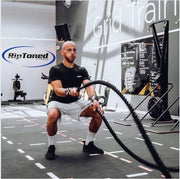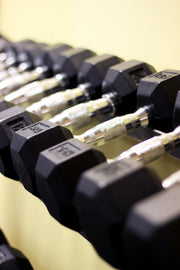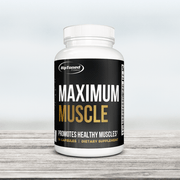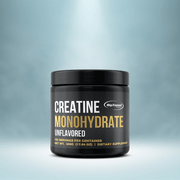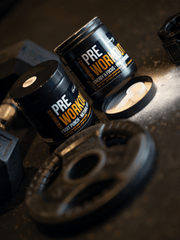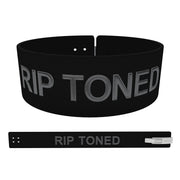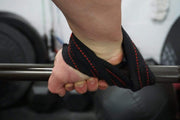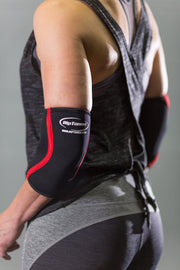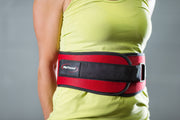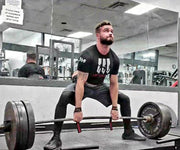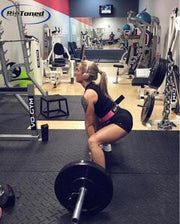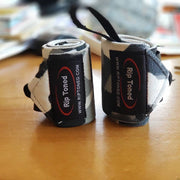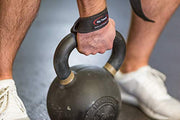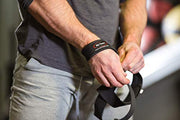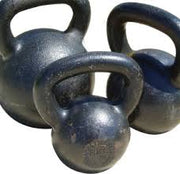The world of fitness and exercise can be overwhelming, with countless workout regimes and diets promising to help you achieve your desired level of health and vitality. However, one key aspect that often goes overlooked is the importance of understanding your target heart rate during physical activity. Your target heart rate is the optimal range at which your heart should beat while exercising in order for you to reap the maximum benefits and improve your overall fitness.
This can be determined using a simple calculation known as the Karvonen formula, which takes into account your resting heart rate and allows you to set specific heart rate zones for different types of workouts. In this article, we will delve deeper into the significance of target heart rate and how to use the personalized target heart rate calculator for optimal fitness.
What is the Target Heart Rate?
Target heart rate is the ideal range at which your heart should beat during exercise in order to achieve maximum results. This range varies based on age, fitness level, and resting heart rate. By maintaining your heart rate within this target zone, you can ensure that you are working out at an intensity that is beneficial for your body without overexerting yourself.
One of the main benefits of targeting your heart rate during exercise is that it allows you to accurately measure and track your progress. As your fitness level improves, your target heart rate will also change, and by monitoring this metric, you can adjust your workouts accordingly. This ensures that you are constantly challenging yourself and making progress towards your fitness goals.
Moreover, working out within your target heart rate zone also helps to increase the efficiency and effectiveness of your workouts. By staying in this range, you can achieve a balance between burning calories and improving cardiovascular health, ultimately leading to improved physical fitness.
How to Calculate Your Target Heart Rate
Calculating your target heart rate helps determine the optimal intensity of your workouts to improve cardiovascular fitness. The American Heart Association suggests a simple method to find your maximum heart rate: subtract your age from 220. This figure represents the maximum number of times your heart should beat per minute during intense exercise.
To find your target heart rate zone, you apply percentages to your maximum heart rate, which vary depending on the desired workout intensity. For moderate-intensity exercise, your target is 50-70% of the maximum heart rate. For vigorous activity, aim for 70-85%.
Here’s how to do the calculation:
- Find Your Maximum Heart Rate (MHR): Subtract your age from 220. For a 20-year-old, this would be 220 - 20 = 200 beats per minute (bpm).
- Calculate Moderate-Intensity Target: For the same 20-year-old, 50-70% of MHR is 100-140 bpm. This is calculated as 200 bpm × 0.50 for the lower end and 200 bpm × 0.70 for the upper end.
- Calculate Vigorous-Intensity Target: For high-intensity workouts, the target would be 70-85% of MHR, which is 140-170 bpm for a 20-year-old, calculated as 200 bpm × 0.70 for the lower end and 200 bpm × 0.85 for the upper end.
Monitoring your heart rate during exercise and staying within these zones ensures you’re working out at the right intensity to achieve your fitness goals efficiently without overexertion.
Explore no-cost methods for finding fitness target heart rate
While the Karvonen formula is a popular and effective way to calculate your target heart rate, there are also other methods you can use that don't involve any costs. These methods can be especially useful if you do not have access to a heart rate monitor or fitness tracker.
- Manual Pulse Check: This method involves taking your pulse manually by placing two fingers (usually your index and middle finger) on your wrist, just below the base of your thumb. Count the number of beats you feel for 10 seconds and multiply by six to get your heart rate per minute. This method may not be as accurate as using a monitor, but can give you an estimate of your heart rate during exercise.
- Talk Test: Another simple way to gauge your workout intensity is the talk test. If you are able to speak in full sentences while exercising, your heart rate is likely within the moderate-intensity zone. If you can only say a few words at a time before needing to catch your breath, you may be in the vigorous-intensity zone.
- Perceived Exertion Scale: The Borg Rating of Perceived Exertion (RPE) scale is a subjective measure that allows you to rate how hard you feel your body is working during exercise. It ranges from six (no exertion) to 20 (maximum exertion). A moderate-intensity workout would typically fall between 12-14 on the scale, while a high-intensity workout may be closer to 17-19.
These methods may not be as precise as a heart rate monitor, but they are convenient and can still help you stay within your target heart rate zone for optimal fitness. It's important to listen to your body and adjust accordingly if you feel you're working too hard or not pushing yourself enough.
Benefits of Using a Personalized Target Heart Rate Calculator
A personalized target heart rate calculator takes into account your resting heart rate and calculates your target zones, making it a more accurate and effective tool for achieving optimal fitness. This is especially beneficial for individuals who may have varying fitness levels or health conditions that require a more specific approach to working out.
Moreover, a personalized calculator allows more flexibility in setting and adjusting fitness goals. As mentioned earlier, as your fitness level improves, your target heart rate will also change. Using a personalized calculator, you can easily adjust your workout intensity to continue challenging yourself and reaching new levels of physical fitness.
Additionally, constantly monitoring and staying within your target heart rate zone can also help prevent overexertion and potential injuries, as well as ensure that you are achieving the desired results from your workouts.
How to track the heart rate during exercise
To track your heart rate during exercise, you can use various methods to ensure you're exercising within your target zone for optimal benefits and safety. Wearable activity trackers like smartwatches and fitness bands are popular. They use optical sensors to continuously monitor your pulse through your skin, providing real-time data on your wrist. This allows you to adjust your workout intensity to stay within your target heart rate range.
Chest strap heart rate monitors offer a more accurate alternative, measuring the electrical impulses from your heart. They are particularly useful for rigorous workouts and can sync with other devices to log your heart rate data over time. If you don’t have access to these gadgets, you can manually check your pulse by stopping your exercise briefly. Place your fingers on your neck or wrist to feel the pulse, count the beats for 30 seconds, and then double the number to get your beats per minute.
Additionally, many cardio machines like treadmills and stationary bikes come with built-in heart rate sensors. By holding onto these sensors during your workout, you can get an estimate of your heart rate, helping you to maintain the right intensity level. Monitoring your heart rate is key to exercising effectively, ensuring you're not overexerting yourself, and meeting your fitness goals efficiently.
How much time to spend in the target heart rate zone
The amount of time you should spend in your target heart rate zone during a workout depends on various factors, such as your fitness goals and overall health. The American Heart Association recommends at least 30 minutes of moderate-intensity exercise five days a week or 25 minutes of vigorous activity three days a week for optimal cardiovascular health.
However, it's important to listen to your body and adjust accordingly. If you're just starting or have any health conditions, it's best to start slowly and gradually increase the duration and intensity of your workouts.
Plus, it's also important to remember that your target heart rate zones are not set in stone. As your fitness level improves, you can increase the duration and frequency of time spent in these zones for even better results.
Tips for maintaining target heart rate during exercise
To effectively maintain your target heart rate during exercise, here are some tips to keep in mind:
- Start with a warm-up: Begin your workout at a lower intensity for the first few minutes to gradually increase your heart rate and prepare your body for more intense activity.
- Monitor your breathing: Pay attention to your breathing and make sure you're not out of breath. If you can't hold a conversation while exercising, you may be pushing yourself too hard.
- Take breaks if needed: It's okay to take short breaks during your workout if you feel like your heart rate is getting too high. This will help you avoid overexertion and allow your body to recover before continuing.
- Stay hydrated: Drinking enough water before, during, and after your workout is essential for maintaining a healthy heart rate.
- Mix up your workouts: Don't rely on just one type of exercise. Mixing up different activities can help keep your body challenged and prevent boredom.
By following these tips and monitoring your heart rate, you can ensure you're getting the most out of your workouts and taking care of your heart health. Always consult a healthcare professional before starting any new exercise routine, especially if you have any underlying health conditions or are over 40.
When to contact a doctor
You should contact a doctor about your heart rate during exercise if you notice unusual or concerning patterns. If your resting heart rate is consistently above 100 beats per minute, it might indicate a health problem, given that the normal range is 60 to 100 bpm, with athletes often having lower rates. Also, if your heart rate stays elevated for an extended period after exercising or if it takes much longer than usual to return to normal, this could be a sign of cardiovascular issues.
Experiencing symptoms like dizziness, faintness, excessive shortness of breath, chest pain, or palpitations during exercise are warning signs that should prompt immediate medical consultation. These symptoms could indicate heart-related issues that need urgent attention.
For those with known heart conditions or taking heart medication, it’s important to speak with a doctor to determine a safe, calculated target heart rate for exercise. Additionally, any sudden and unexplained change in how your heart rate responds to exercise or your daily heart rate patterns warrants a discussion with a healthcare provider.
Lastly, if you’re starting a new exercise program, especially if you are older or have existing health conditions, getting a medical clearance is crucial to ensure your heart can handle the increased activity safely.
FAQs
How do I calculate my target heart rate for optimal fat burning?
To calculate your target heart rate for the fat-burning zone, first, determine your estimated maximum heart rate by subtracting your age from 220. For fat burning, aim for 50-70% of this number. This target range depends on your fitness level and goals, but focusing on medium-intensity aerobic exercise will help you stay within this optimal zone for fat-burning.
What is the difference between medium and high-intensity aerobic exercise in terms of heart rate?
The main difference lies in the percentage of your estimated maximum heart rate achieved during exercise. Medium-intensity exercises typically keep your heart rate at 50-70% of its maximum, ideal for fat-burning and endurance-building. High-intensity exercises push your heart rate to 70-85%, entering the target training zone for improving cardiovascular health and stamina. Your pulse or heart rate during these activities indicates the exercise intensity.
Can using a target heart rate calculator improve my normal weight maintenance?
Yes, utilizing a target heart rate calculator can significantly aid in maintaining a normal weight. By calculating your target heart rate, you ensure that your active exercise falls within the optimal intensity for achieving specific health and fitness goals, whether fat-burning, endurance, or strength training.
How does my target health rate change with more active exercise?
As you engage in more active exercise and your fitness level improves, your heart becomes more efficient, and your resting pulse rate may decrease. This improvement allows you to perform high-intensity aerobic exercises with less effort over time. Consequently, your target training zone may shift higher, allowing you to exercise at a higher intensity while maintaining control over your exercise intensity and achieving medium-high results.
Conclusion
Monitoring your heart rate during exercise is essential for ensuring your safety and optimizing the benefits of your workouts. With the available technology and monitoring methods, it's easier than ever to track your heart rate and stay within your target zone. Remember to start slowly, listen to your body, and consult a healthcare professional if you have any concerns about your heart rate during exercise.
By properly monitoring and maintaining your heart rate, you can improve your overall fitness and achieve your health goals more effectively. So keep track of that ticker while you sweat it out!
Overall, staying within your target heart rate zone is key to maximizing the benefits of exercise and taking care of your heart health. With the right tools, knowledge, and guidance, you can ensure that your workouts are safe, effective, and enjoyable.

You May Also Be Interested In:





